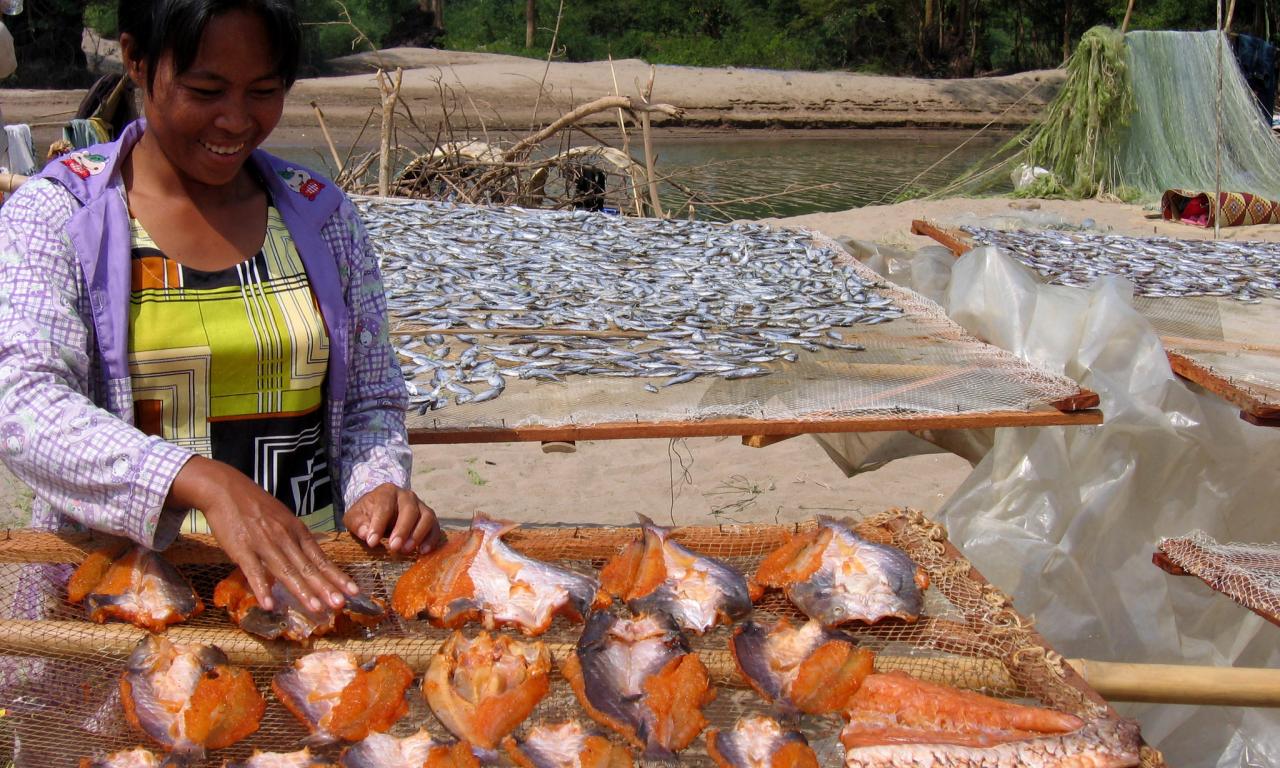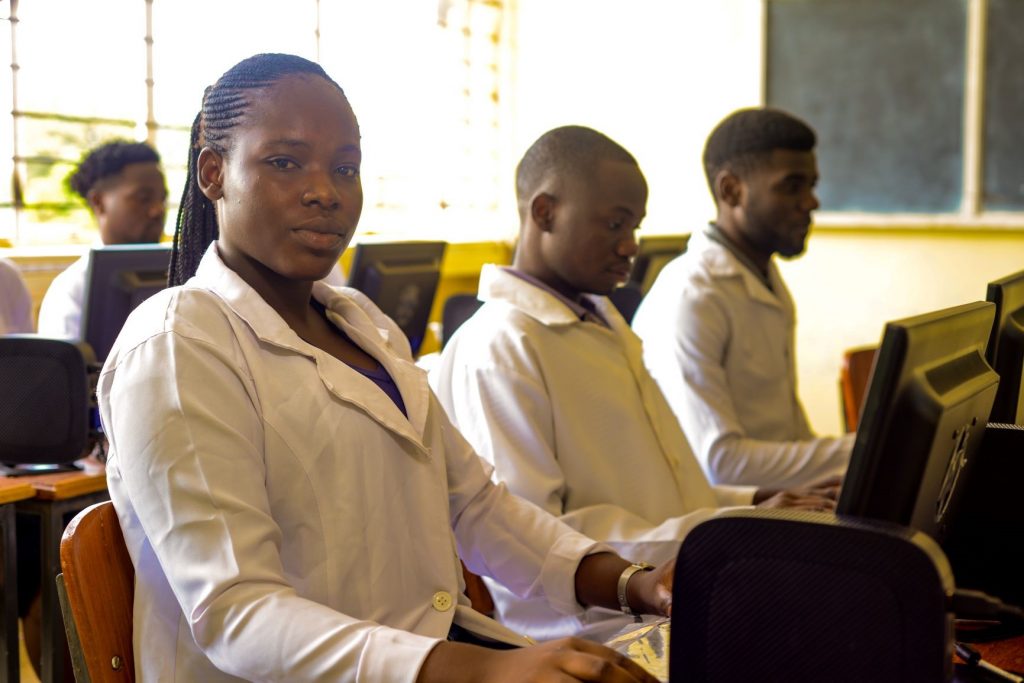
A new strategic brief shows aquatic food systems have the potential to provide livelihood opportunities for youth but challenges remain for them to join the sector. Multisector initiatives to improve access to training and finance as well as promote digital innovation can improve the participation of youth in fisheries, aquaculture and associated value chains.
Governments, businesses and academia must step up efforts to ensure aquatic food systems provide decent employment opportunities for young people in low- and middle-income countries, urged panelists in a Fish4Thought event hosted by WorldFish on International Youth Day.
As youth unemployment rises with the impacts of the COVID-19 pandemic and more young people are stuck in informal and less secure jobs, a group of researchers, industry experts and entrepreneurs gathered to discuss actions needed for aquatic food systems to attract youth and provide them enriching livelihood opportunities.
The virtual dialogue included the launch of a new strategic brief from the CGIAR Research Program on Fish Agri-Food Systems (FISH CRP), ‘Youth in small-scale fisheries and aquaculture.’ Among the panelists were the brief's co-authors, Indika Arulingam and Likimyelesh Woldegiorgis, FISH researchers from the International Water and Management Institute (IWMI), who presented the research and led the discussion on youth’s aspirations, opportunities and challenges in the small-scale fisheries and aquaculture sectors of Africa, Asia and the Pacific.
Incentivizing youth employment

The COVID-19 pandemic has further exacerbated unemployment among youth, causing many to lose sources of income. According to the Organization for Economic Co-operation and Development (OECD), youth unemployment increased from 8.6 percent at the end of 2019 to 11.5 percent at the end of 2020.
Benedict Tan, the program coordinator and portfolio associate at HATCH Blue, highlighted a study across Indonesia, Thailand and Vietnam which revealed a severe labor shortage from transient workers unable to travel to farms to work. He indicated this offered an opportunity for local youth, especially those who are unemployed, to pursue career opportunities in aquatic food systems.
Neetha Shenoy, an aquaculture specialist at WorldFish, pointed to an Indian government initiative of encouraging youth to take up jobs in aquatic food systems by providing youth-centric financial schemes to counter unemployment during the pandemic. Youth who have returned to their villages after losing their jobs due to COVID-19 can leverage these schemes to start their own fisheries and aquaculture businesses.
“Although aquatic food systems provide livelihood opportunities for the engagement and employment of young people, youth don’t perceive aquatic food systems as appealing as it is seen as a traditional and labor-intensive activity which generates lower profits,” said Shenoy. She recommended raising awareness of their profitability through various trainings, social media campaigns and the introduction of food technologies.
Entrepreneur Hammed Oni, who is the co-founder and managing director of Nigerian-based Frotchery Farms, agreed there is a need to change the mindsets of youth. He gave examples of his team going to the National Youth Service Corps camps in Nigeria to share information about employment opportunities in the sector and how it is critical to nutrition security and the economy of the country. Interested youth are then placed in internships and mentorships through the Tony Elumelu Foundation where they are trained and then employed across Africa.
Tan suggested that marketing efforts of governments should also be stepped up. Research organizations, higher education institutions and non-governmental bodies such as CGIAR, WorldFish and IWMI also play a crucial role in changing the negative perception by featuring prominent and successful youth in aquatic food systems.
Introducing aquatic food systems in school curriculum

While acknowledging that programs in the form of courses developed at the research institute and university level for youth would be helpful, Akintola Shehu, an associate professor of fisheries in the department of fisheries at Lagos State University, was of the opinion that a restructuring of the nomadic education system is needed to prepare youth from a young age for a career in aquatic food systems.
The nomadic education system was introduced in 1989 to ensure nomads in Nigeria have equal access to basic educational opportunities. Shehu shared that the current curriculum teaches fishers to be consumers, not producers. By incorporating the production elements in the education system, young people would learn how and why fisheries are vital to their heritage and way of life. This will in turn encourage them to participate in the sector when they are older, he suggested.
Shehu pointed out that fishers are usually people without a voice, hence they are marginalized. Acquiring the necessary skills and knowledge may give youth more confidence to begin a career path in aquatic food systems. Oni further emphasized the importance of having mentors to guide youth on the necessary skills and knowledge through training. Supporting farming groups, youth organizations and unions will lower the barrier of entry into the sector, especially for the young people, said Tan.
Shakuntala Thilsted, WorldFish’s global lead for public health and nutrition and vice chair of the Advancing Equitable Livelihoods Action Track at the UN Food Systems Summit 2021, agreed that youth engaging and supporting each other are becoming more visible and together help make their voices heard.
Adopting digital tools and reforming financial systems and funding

Adopting the use of digital tools in aquatic food systems is an important initiative to attract youth to join the sector. They may be more willing to participate after digitalization as the perception and reality of aquatic food system livelihoods being labor-intensive and of low-returns changes.
Currently, such digital tools do exist but are not widely adopted by older or less tech-savvy farmers, explained Tan. As young innovators, youth can leverage mobile apps, digital tools, technology and other information communication technologies to increase their value and contributions in the supply chain.
Aquatic food system livelihoods can be capital intensive and youth often do not possess the funding capabilities to independently make their start or repay bank loans before their first harvest. Shehu urged state and non-state actors in finance to develop pro-youth payment initiatives that are fair and consider production and harvest cycles.
Tan agreed that a more inclusive system with friendlier terms will help encourage youth participation in the sector. He pointed to the success of the Cambodia Rural Development Team with regards to small-scale aquaponics systems.
Tan also recommended that governments focus on funding small-scale aquaculture instead of export-oriented initiatives. This will help reallocate resources to where they are most needed, as there is an abundance of opportunities available for export-oriented initiatives.
Watch the event recording and read the strategic brief to learn more about the outcomes of the launch event on youth in small-scale fisheries and aquaculture.
Explore more from WorldFish’s 2021 International Youth Day Campaign.
Acknowledgment
This work was undertaken as part of, and funded by, the CGIAR Research Program on Fish Agri-Food Systems (FISH) led by WorldFish. The program is supported by contributors to the CGIAR Trust Fund.
